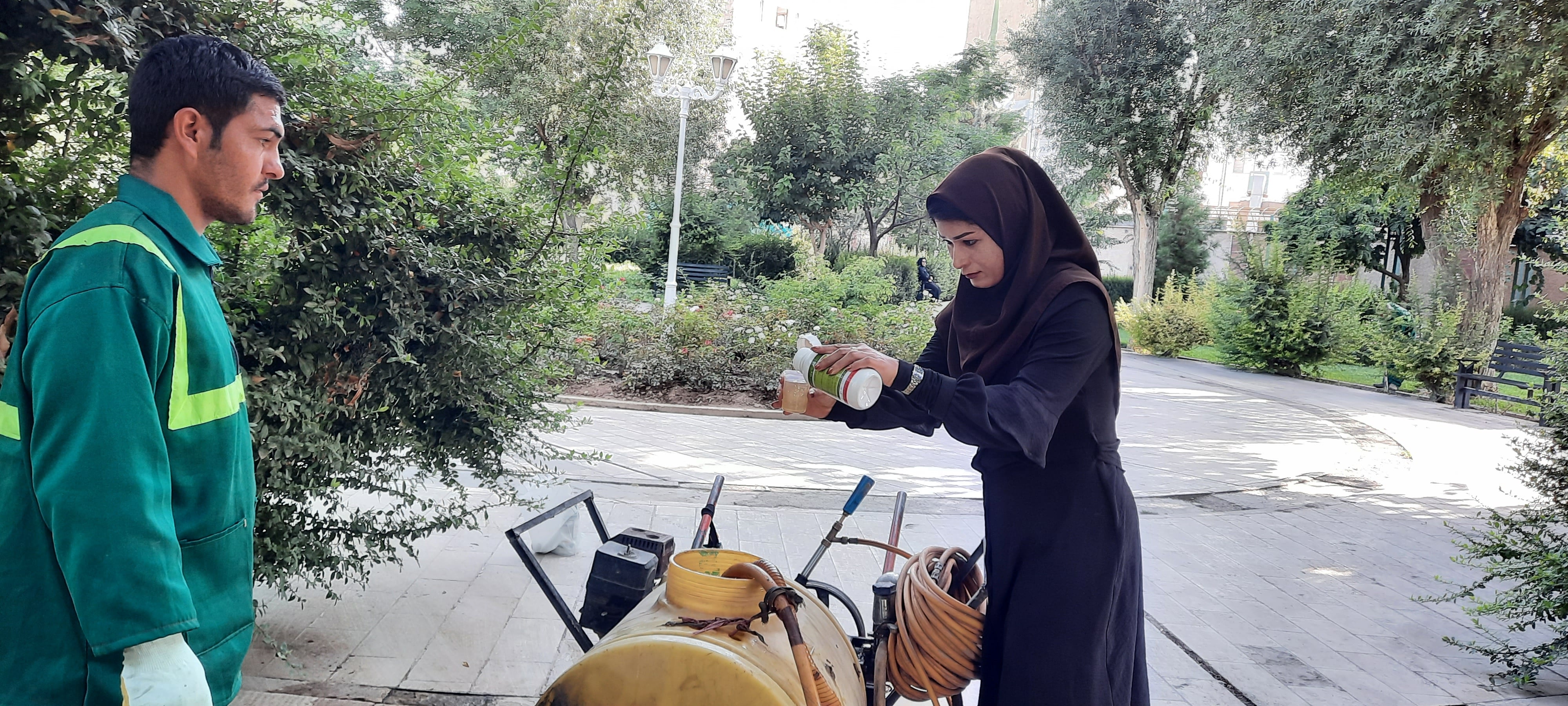Tehran, Iran
Substituting chemical pesticides
with pruning waste in
the production of herbal formulations

Basic Data
Population size: 9,013,700
Population Growth Rate(%): 1.20
Surface Area (sq.km):730
Population Density (people/sq.km):11,800
GDP Per Capita(U.S.S):4,091
GINI Index:0.4
During the outbreak of mulberry whiteflies in the urban green space of Tehran between 2016 and 2018 in Atrat Park, the performance of the Caesalpinia gilliesii naturally attracting full-fledged insects (whiteflies) was the first spark of study as an investigation of the trap plant.
The utilization of pruning plants and Caesalpinia gilliesii plants represents a transformative leap in replacing chemical pesticides within the herbal formulation production process. This initiative in Tehran serves as a catalyst for transitioning contemporary cities from their industrial past into more eco-friendly urban environments. To achieve this, the project leverages urban green spaces to combat urban pests, effectively replacing the need for harmful chemical pesticides while concurrently reducing expenditure on these costly toxic substances. Central to this initiative is the utilization of natural resources. Rigorous experimentation has been conducted to ascertain their effectiveness, resulting in the publication of five scientific papers.
This project pioneers a natural, eco-conscious solution for herbal formulation production, contributing significantly to the transformation of modern cities into toxin-free, nature-friendly urban landscapes. The project aligns with ten SDGs, making it a vital contributor to the global effort for a more sustainable and environmentally responsible future.


 In Focus | World Cities Day: People-Centred Smart Cities
In Focus | World Cities Day: People-Centred Smart Cities City Stories | Fostering community resilience: A lifeline for the Central African Republic
City Stories | Fostering community resilience: A lifeline for the Central African Republic In Focus | Innovative Education, Empowering Futures
In Focus | Innovative Education, Empowering Futures




















 Tel: +86 020 3780 4434
Tel: +86 020 3780 4434 Email: info@guangzhouaward.org
Email: info@guangzhouaward.org Adress: Unit 01-7, 28th Floor, No. 7, Chunrong 3rd Road, Tianhe District, Guangzhou, Guangdong, 510000, PRC
Adress: Unit 01-7, 28th Floor, No. 7, Chunrong 3rd Road, Tianhe District, Guangzhou, Guangdong, 510000, PRC




